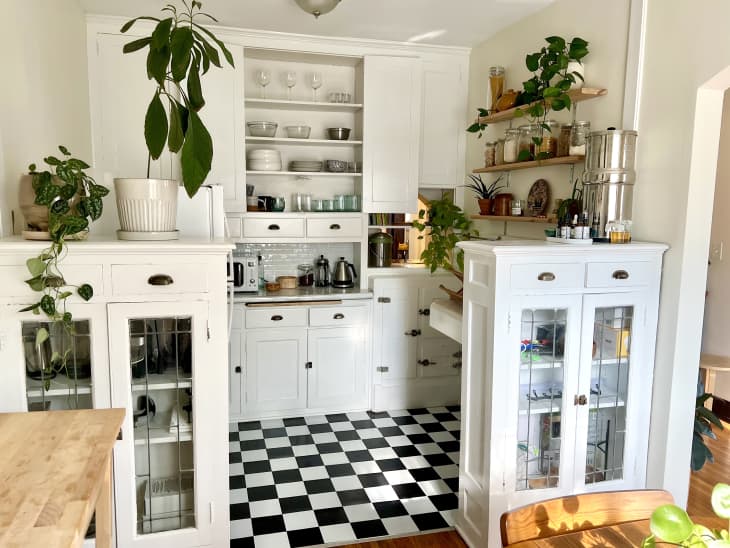The Biggest Red Flag to Watch for If You’re Hiring a Painter

Some home projects are very obviously better left to a professional, such as roofing, electrical work, and plumbing, which all require specialized knowledge and skills. Painting is one of those home projects that straddles the line. If you have the necessary painting supplies and a little patience, there are plenty of opportunities to DIY your own paint makeover. But there are also other times when you might want someone else to take on the task (think: rooms with high ceilings or an entire exterior that needs a freshening up). In those cases, you might consider hiring a painting contractor to get the job done.
But while you’re perusing the web and reading reviews, wading through the pros and cons of each business may prove difficult. So, how do you know if your chosen company is worthy of getting your business? To set your future painting projects up for success, four experts — two designers and two paint pros — weigh in on what’s considered a red flag when securing a painter. Their resounding top pick? The biggest red flag is when your contractor doesn’t have a license or proof of insurance.
Before you hire a painter, make sure they have a license and proof of insurance.
Just as with any situation, having insurance offers protection for everyone involved. In the case of pro painters, it safeguards you, your home, and the painting company from a variety of issues that may arise. “Without insurance, a homeowner is exposed if the painters get hurt on the job or if something gets damaged on the home,” says Paige NeJame, who owns CertaPro Painters of the South Shore and Boston in Massachusetts.
Keely Smith, the lead designer at JD Elite Interiors in Vancouver, also warns of liability when working with an unlicensed paint contractor. “An uncertified painter might leave you on the hook for medical bills or repair costs from even a small mishap,” she warns. Additionally, a certified professional receives safety training, so you can have peace of mind that they’re qualified.
Be wary if painting contractors don’t have proof of insurance and certification readily available. “If a painter cannot produce an insurance certificate within a day, that is a sign that he or she does not have insurance,” says NeJame. “Most insurance agents, including ours, can produce a certificate of insurance within an hour.” She also adds that you should request the painter to add you, as the homeowner, as an additional insured person for added protection.
There are other things to look out for beyond licensing and insurance, though. Here are experts’ top watch-outs.
Red flag: The painter won’t provide a specific outline for the scope of work.
You should always ask for a contract outlining the project’s parameters and approximate cost before signing a contract. Carla Bast owns a Minnesota-based studio, Carla Bast Design, and recommends always asking for a contract that lists specifics. “Request a written estimate that outlines the scope of work, materials used, timeline for completion, and warranty,” says Bast. She advises steering clear of any painters that can’t — or won’t — provide this information.
Red flag: The painter’s cost estimates are really broad.
Sometimes, a project estimate falls within a range instead of pinpointing a specific price, which isn’t a big concern unless the range is broad, as they may be trying to increase their profit margins. “For instance, if they note the brand name of paint they’ll use but don’t share the specific kind of paint, they can use a spectrum of quality with pricing from $14 to $100 per gallon,” reveals Bill Nishanian, who is the owner of Nash Painting in Nashville, Tennessee.
Red flag: The painter doesn’t specify the number of coats of paint they’ll use.
Nishanian also warns against contractors who don’t specify the number of coats of paint or how many colors they’ll use, as varying hues and multiple coats require extra time. “If that’s not clear in the initial contract, and you’ve paid a large deposit, they hold all the cards,” Nishanian says.
Red flag: The painter asks for a large deposit.
Nishanian says that deposits are another cautionary point. “Most of the time, they are making 40 to 60% profit on the job, and if they ask for 50% down, they guarantee that they will not lose money, whether you’re satisfied or not,” he says. On the other hand, companies that ask for a low deposit often prioritize the customer and their happiness.